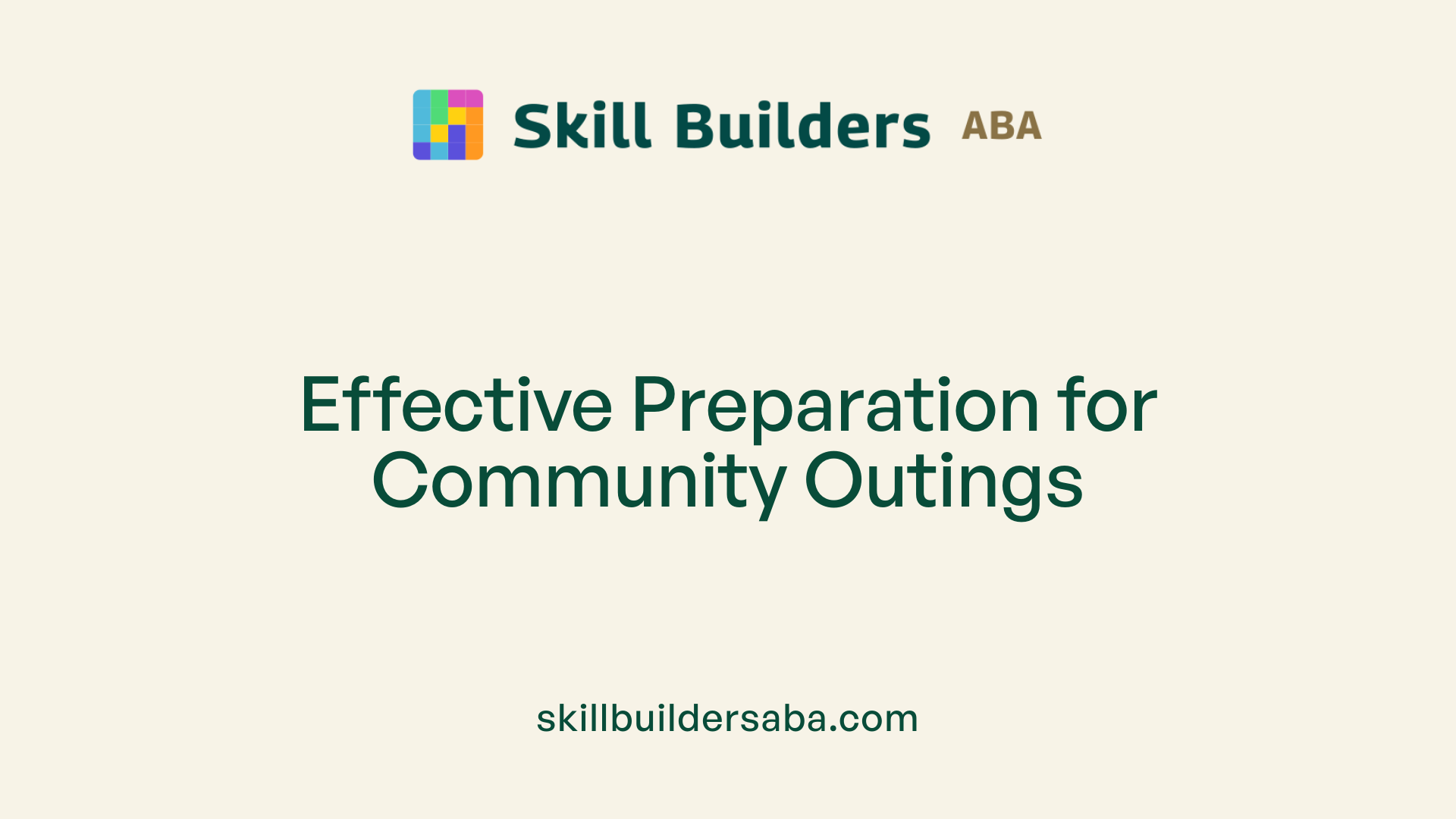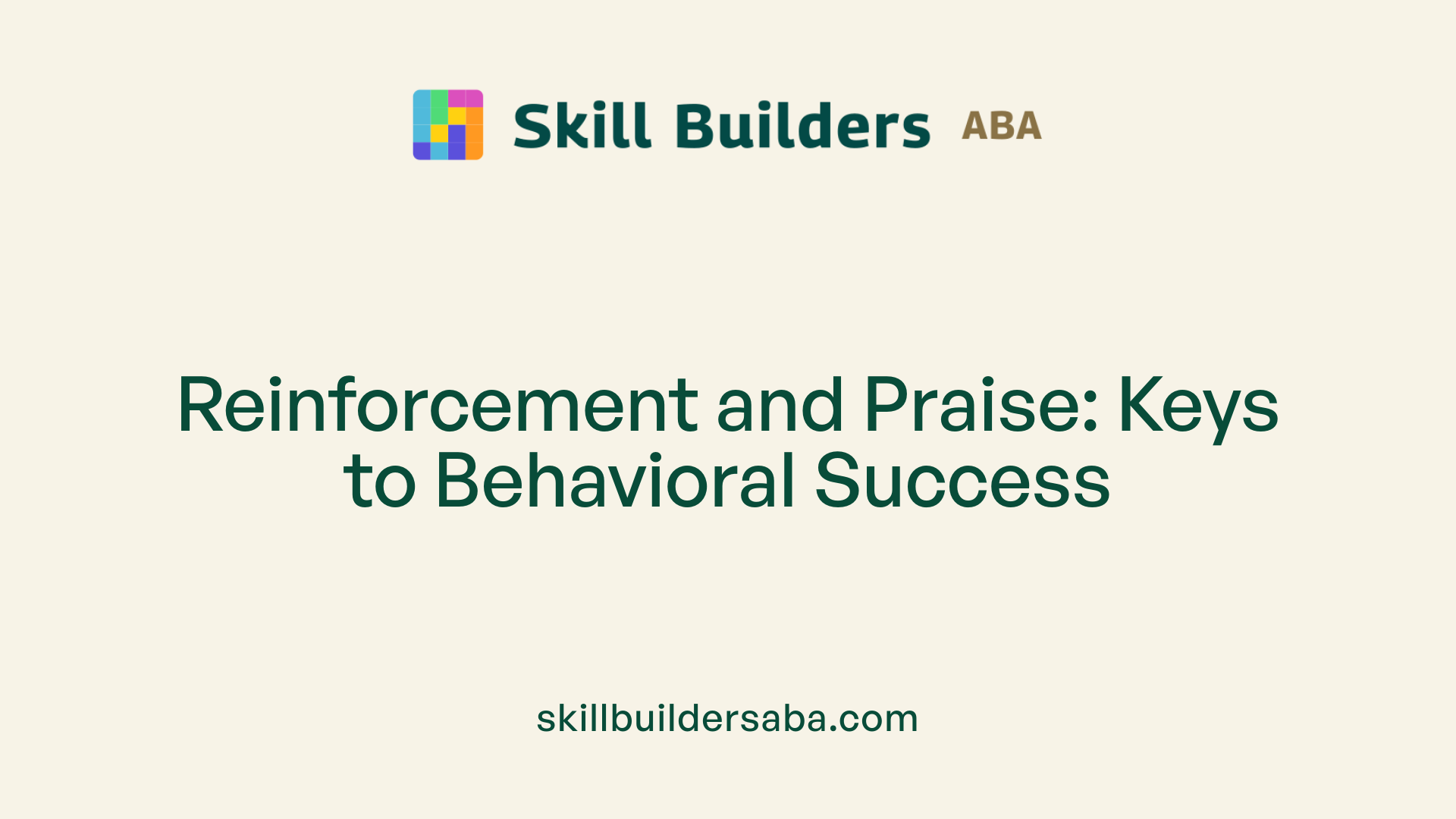How to use ABA strategies in community outings
Enhancing Autistic Children’s Independence in Community Settings

Empowering Through ABA: Practical Strategies for Effective Community Outings
Community outings are vital opportunities for children with autism to develop social, communication, and adaptive skills. Applying Applied Behavior Analysis (ABA) strategies effectively during these outings not only facilitates skill generalization but also increases enjoyment and confidence. This comprehensive guide explores how caregivers and professionals can implement ABA techniques seamlessly in community environments, turning outings into meaningful, educational, and fun experiences.
Understanding Community-Based ABA Therapy and Its Objectives

What is community-based ABA therapy?
Community-based ABA therapy is a delivery method where Applied Behavior Analysis (ABA) services are provided within a child's natural environment, such as parks, schools, stores, and recreational areas. This approach helps promote the generalization of skills, meaning children can transfer what they learn in therapy to everyday situations.
Initially, a Board Certified Behavior Analyst (BCBA) may accompany the child to ensure the environment is safe, appropriate, and conducive to learning. During ongoing sessions, a Registered Behavior Technician (RBT) supports the child, implementing strategies and fostering engagement.
The focus of community-based ABA is to help children practice social, communication, and adaptive skills in familiar contexts like grocery shopping or attending after-school activities. Parents and caregivers are actively involved in these sessions, which allows them to learn how to reinforce strategies consistently across different settings. This hands-on, real-life application enhances the child's independence, social interaction, and resilience, ultimately aiming to improve their overall functioning within the community.
What are the community goals for ABA?
The overarching community goals for ABA emphasize full participation and integration of individuals with developmental and behavioral challenges into their local environments. These goals prioritize developing social skills, increasing independence, and encouraging meaningful interactions in various community settings.
ABA interventions such as Community-Based Instruction (CBI) teach practical, real-world skills like navigating public transportation, shopping, and participating in recreational activities. By doing so, children learn how to handle daily routines confidently, which boosts self-advocacy and self-confidence.
These goals also focus on reducing social barriers and promoting inclusion, helping individuals feel more comfortable and competent in unfamiliar or crowded environments. Ultimately, the aim is to improve quality of life by fostering greater autonomy, social participation, and active engagement in the community.
What are the goals of community outings in ABA therapy?
Community outings serve as a cornerstone for applying therapy in real-world contexts. The primary goal is to facilitate the transfer of skills learned during structured therapy sessions to everyday settings, enhancing a child's ability to function independently.
Activities like shopping, visiting a park, or attending a doctor’s appointment provide natural opportunities to practice behaviors such as following directions, maintaining personal hygiene, and engaging with peers.
Gradually exposing children to new environments helps build their confidence, reduces anxiety, and fosters resilience. Careful pre-planning, including priming strategies like social stories, visual schedules, and role-playing, prepare children for these experiences.
Reinforcement during outings—such as praise, preferred items, or small treats—encourages positive behaviors and reinforces skill acquisition. Over time, these experiences aim to increase comfort and competence, enabling children to participate more actively and confidently in community life.
Strategies for Effective Community-Based ABA Interventions
To optimize outcomes, several strategies are employed during community ABA interventions:
| Strategy | Description | Benefits |
|---|---|---|
| Pre-planning & Agendas | Creating schedules and expectations before outings | Reduces anxiety, improves understanding |
| Visual Supports & Social Stories | Using pictures and stories to explain activities | Clarifies expectations, supports communication |
| Reinforcers & Rewards | Bringing preferred items or activities for motivation | Encourages positive behavior, increases engagement |
| Clear Instructions | Using simple commands like 'Hold my hand' | Enhances compliance, reduces confusion |
| Transition Objects | Using Favorite toys to assist with change | Eases transitions, provides comfort |
| Gradual Exposure | Starting with familiar places and increasing complexity | Builds confidence steadily |
| Support During Appointments | Involving therapists during visits like dental visits | Promotes skill generalization, reduces stress |
Additional Components of Successful Community ABA
- Priming and Role-Playing: Preparing children through social stories and role-playing helps familiarize them with upcoming activities and expected behaviors.
- Personalized Reinforcers: Using motivating rewards such as favorite snacks or toys encourages positive participation.
- Clear Boundaries and Expectations: Setting explicit rules and reinforcing adherence to them assists children in understanding appropriate behaviors.
- Small, Attainable Goals: Focusing on achievable objectives bolsters confidence and encourages ongoing progress.
- Post-Activity Reflection: Reviewing outings to celebrate successes and identify areas for improvement guides future planning.
- Support from Professionals: Collaborating with BCBAs and other specialists ensures strategies are tailored to each child's needs.
Challenges and Behavioral Strategies
During community outings, children may sometimes exhibit challenging behaviors. Maintaining a calm and neutral demeanor helps avoid escalation. Redirecting attention to preferred topics or objects can divert tantrums or frustration. Teaching functional communication skills empowers children to express needs better, reducing behavioral issues.
Modeling and reinforcing social interactions, like greetings and polite responses, encourage positive peer engagement. Using timers and countdowns prepares children for transitions, making changes smoother.
Importance of Visual Supports and ABA Techniques
Visual supports, including schedules, picture cards, and social stories, play a vital role in helping children anticipate activities and reduce anxiety. Consistent positive reinforcement—praise, tangible rewards, or activity-based incentives—is critical in encouraging desired behaviors. Immediate application of reinforcement during community outings strengthens learning.
Overall, combining these strategies within an ABA framework fosters meaningful skill development and social integration, making community outings effective tools for promoting independence and confidence.
Pre-Planning and Priming for Successful Outings

How can parents and caregivers prepare children for community outings?
Preparation is vital to help children feel comfortable and confident during community outings. Parents and caregivers should start by discussing the specific location, expectations, and the type of behaviors that are appropriate beforehand. This proactive conversation helps set a positive tone and reduces uncertainty.
Using visual supports such as social stories and visual schedules is highly effective. Social stories provide a narrative that explains what will happen during the outing, while visual schedules give a clear outline of activities in sequence. These tools help children understand what to expect, easing anxiety and resistance.
Role-playing is another useful technique. By acting out scenarios, children can practice responses to various situations they might encounter. This rehearsal fosters familiarity and reduces anxiety about the unknown, making transitions into community settings smoother.
Verbal cues and creating detailed agendas further support preparation. For example, giving a countdown before leaving or discussing the plan step-by-step helps children anticipate upcoming activities. Overall, these strategies promote a sense of control and preparedness, encouraging positive engagement.
What techniques facilitate better transition into community activities?
Smooth transitions are crucial for maintaining a child's comfort and cooperation during outings. One effective method is using timers and countdowns. These visual and auditory warnings alert children about upcoming changes, giving them time to prepare mentally.
Clear and simple instructions also assist transition. Phrases like "Hold my hand," "Use an inside voice," or "Walk calmly" provide concrete expectations. Reinforcing these commands consistently helps children understand and adhere to expected behaviors.
Transition objects can ease the process further. A favorite toy, sensory item, or calming object can serve as a familiar anchor during movement between activities.
By combining verbal cues with visual supports such as social stories, schedules, or visual timers, caregivers can make transitions less overwhelming. Pre-planning activities with detailed agendas and discussing the steps in advance prepare children mentally, reducing stress and increasing compliance.
In summary, a combination of visual supports, clear instructions, and strategic use of transition objects enhances a child's ability to navigate community outings effectively.
| Technique | Purpose | Additional Tip |
|---|---|---|
| Visual supports (schedules/social stories) | Helps children anticipate and understand activities | Use pictures and simple language |
| Timers and countdowns | Signal upcoming transitions to prepare children | Use visual timers or alarms |
| Clear instructions | Set clear behavioral expectations | Repeat and reinforce frequently |
| Transition objects | Comfort during activity changes | Favorite toy or sensory item |
| Pre-planning and agendas | Organize activities to reduce uncertainty | Discuss steps aloud with child |
These techniques, when combined, create a structured and supportive environment that promotes successful engagement in community settings for children, especially those with developmental needs.
Using Reinforcement and Behavior-Specific Praise in Natural Settings

How do reinforcement strategies work during community outings?
Reinforcement strategies are essential tools in encouraging positive behaviors during community outings. They involve offering rewards or praise promptly after the child exhibits a desirable behavior. In natural settings such as parks, stores, or doctor's offices, these reinforcers can be tailored to what motivates each child, including favorite snacks, toys, or preferred activities.
Using tangible rewards or activity-based motivators ensures children stay engaged and motivated to follow expectations like listening, waiting patiently, or greeting others politely. The immediacy of reinforcement is crucial; it helps children connect their actions with the reward, increasing the likelihood of repeating the positive behavior.
For example, a child might earn a small toy or praise for walking calmly through a busy store. Over time, these reinforcement techniques help establish consistent, positive behaviors that can be generalized across various community environments.
What is the role of behavior-specific praise, and how is it applied?
Behavior-specific praise is a powerful method to reinforce particular actions by acknowledging exactly what the child did well. Instead of general praise like “Good job,” specific statements such as “Great job holding hands” or “I like how you waited patiently” clarify which behaviors are being encouraged.
Applying this type of praise during outings helps children understand expectations clearly, which is especially important in dynamic environments. When children receive specific positive feedback, they learn to associate particular actions with positive outcomes, promoting their understanding of appropriate social and behavioral norms.
This approach is often paired with reinforcement to strengthen these behaviors further. For example, if a child greets a therapist politely and makes eye contact, the caregiver might say, “Excellent greeting! That was very polite,” accompanied by a preferred activity or praise. This combo boosts confidence and reinforces social interaction skills.
Techniques to combine reinforcement and praise during outings
- Personalize reinforcers: Use preferences identified through assessments or prior observations, such as favorite snacks, toys, or activities.
- Be specific: Always match praise to the exact behavior to foster understanding.
- Reinforce immediately: Deliver rewards and praise as soon as possible after the behavior.
- Maintain consistency: Apply rules and reinforcement every time the behavior occurs to build stability.
- Use visual supports: Incorporate visual schedules or social stories to prepare children for expected behaviors, making reinforcement more effective.
By integrating these techniques, professionals and caregivers can create supportive natural environments that promote learning and adaptive skills.
Strategies for enhancing reinforcement and praise
| Technique | Purpose | Example | Additional Tips |
|---|---|---|---|
| Personalize reinforcers | Increase motivation and engagement | Favorite snacks or toys | Update reinforcers regularly to maintain interest |
| Behavior-specific praise | Clarify desired behaviors | “Good job using your inside voice” | Practice delivering praise consistently |
| Immediate reinforcement | Strengthen connection between behavior and reward | Verbal praise right after greeting a peer | Use timers or countdowns to prepare children for transitions |
| Visual supports | Reduce anxiety and promote understanding | Visual schedules or social stories | Use before and during outings to set expectations |
By systematically applying reinforcement and specific praise, children can acquire new skills more effectively in community settings. This approach not only encourages positive participation but also fosters independence and social competence.
Strategies for Generalization and Building Confidence in Community Settings

How can ABA strategies promote skill generalization in community outings?
ABA (Applied Behavior Analysis) employs a systematic approach to help children transfer learned skills across various settings and situations. This is achieved by gradually exposing children to multiple environments, starting with familiar places like home or local parks. As children become comfortable, they are introduced to less familiar locations such as museums or shopping centers.
Visual supports, including schedules, social stories, and picture cards, play a vital role. These tools help children understand what to expect, reducing anxiety and making transitions easier. For instance, a visual schedule outlining the steps of a trip can help a child anticipate activities, promoting smoother participation.
Incorporating learned skills into natural activities encourages their use beyond therapy sessions. For example, a child who has practiced greeting others can apply this skill when meeting new peers at a playground.
Consistent practice across different settings and with various people helps solidify these skills, making them more resilient and adaptable. The ultimate goal is to foster independence and confidence, enabling children to navigate community environments successfully.
How should caregivers structure community outings to maximize learning and confidence?
Effective structuring of outings begins with starting small. Caregivers should plan short, familiar trips where the child feels safe and confident, such as visiting a nearby grocery store or park.
During these outings, involving children in simple tasks like waiting in line, checking off shopping lists, or greeting staff encourages active participation. These activities promote generalization of skills like patience, social interaction, and functional communication.
Providing comfort items such as favorite toys or sensory objects can help reduce stress and improve focus. Visual supports—like picture schedules or social stories—further ease transitions and set clear expectations.
Gradually, outings can expand to new environments, initially familiar places and later less familiar ones like a new restaurant or a different park. Role-playing social interactions before outings allows children to practice appropriate responses, boosting their confidence.
Throughout these experiences, reinforcement remains essential. Praising efforts and successes, like waiting patiently or using polite words, reinforces positive behavior and encourages continued progress. Patience and consistency in planning increase the likelihood that children will develop comfort and independence in community settings.
Engaging Children and Supporting Emotional Well-Being During Outings

How can ABA make community outings enjoyable for children?
ABA (Applied Behavior Analysis) techniques are designed to make outings not only successful but also fun and engaging for children. Incorporating playful elements such as games, obstacle courses, or superhero quests tailored to a child's interests can turn a simple trip into an exciting adventure.
Movement activities like dancing, Simon Says, or other physical play stimulate interest and help burn off energy, making the outing more dynamic. Using humor—such as silly voices, funny hats, or unexpected surprises—can keep children amused and motivated to participate.
Personalization plays a significant role. For instance, using learning materials featuring a child's favorite characters, like dinosaurs or superheroes, enhances engagement. These strategies help foster positive attitudes toward community outings, promote social interaction, and support skill development in a relaxed, enjoyable environment.
What methods support emotional well-being and reduce stress during outings?
Reducing stress and supporting emotional well-being are vital to successful outings. Providing comfort items—such as a favorite toy, sensory fidget tools, or calming objects—can reassure children and diminish anxiety.
Maintaining a calm, neutral demeanor as a caregiver helps prevent escalation of any challenging behaviors. When a child becomes overwhelmed or upset, distraction techniques like redirecting attention to preferred topics or objects can soothe and refocus them.
Reinforcing calm and cooperative behavior with praise and small rewards encourages positive patterns. This not only makes the immediate outing smoother but also builds resilience for future outings.
By combining these approaches—fostering fun, providing comfort, and using positive reinforcement—parents and professionals can create a supportive environment that makes community outings both enjoyable and less stressful for children with autism or other developmental challenges.
| Strategy | Purpose | Examples |
|---|---|---|
| Play-based activities | To increase engagement | Games, obstacle courses, themed quests |
| Humor and surprises | To motivate participation | Funny voices, silly hats, surprise elements |
| Personalized materials | To sustain interest | Favorite characters, interests |
| Comfort items | To reduce anxiety | Toy, sensory tools, fidget objects |
| Distraction and redirection | To manage challenging behaviors | Changing topics, offering preferred objects |
| Positive reinforcement | To promote calm behavior | Praise, small treats |
Engagement, emotional support, and consistent use of ABA principles combine to create enjoyable and less stressful community outings for children.
Post-Outing Reflection and Future Planning for Better Outcomes

How does post-outing reflection benefit ABA integration?
Post-outing reflection plays a crucial role in enhancing the effectiveness of Applied Behavior Analysis (ABA) strategies during community outings. After each outing, caregivers and professionals review what behaviors and strategies worked well and identify areas that need improvement. This process involves discussing successes, such as improvements in compliance, social interactions, or tolerance to new experiences.
By recognizing these positive outcomes, caregivers gain motivation and insights into which approaches are effective. Conversely, identifying challenges like difficulty following instructions or managing transitions helps tailor future plans. Adjustments might include modifying visual supports, changing reinforcement types, or restructuring the outing itself.
This reflective practice ensures continuous learning and development. It promotes consistency in applying ABA principles across different environments, which is essential for generalization. Essentially, regular reflection fosters confidence in the child's abilities and helps refine strategies, ultimately leading to more successful and enjoyable community experiences.
How should caregivers prepare for future community activities?
Preparing for upcoming outings involves thoughtful planning based on previous experiences and coordinated efforts. Caregivers should review past outings to assess what strategies were successful and where adjustments are needed. This might include updating visual supports, social stories, or reinforcement plans to better suit the child's evolving needs.
Involving the entire support team—including therapists, teachers, and other caregivers—is vital for creating a unified approach. Setting small, achievable goals for each outing helps build the child's confidence gradually. For instance, starting with short, familiar trips and slowly increasing duration and complexity prepares the child for more challenging environments.
Furthermore, updating visual supports such as schedules and social stories can help the child anticipate what to expect and reduce anxiety. Reinforcement plans should also be reviewed to ensure they remain motivating and appropriate.
Open communication with all individuals involved in the child's care fosters a cohesive environment. When everyone understands and implements consistent ABA strategies, community outings tend to proceed more smoothly. This collective effort supports the child's development of independence and social skills, making outings both effective and enjoyable for all.
Bringing It All Together for Confident, Independent Community Living
Implementing ABA strategies during community outings requires careful planning, consistent reinforcement, and a compassionate understanding of each child's unique needs. Preparing children through visual supports and role-playing reduces anxiety, while personalized reinforcers motivate engagement. Gradual exposure to new environments and social interactions fosters confidence and facilitates skill generalization. Reflection and collaboration with therapists and community members ensure ongoing improvement. By turning outings into positive, structured learning experiences, caregivers can significantly enhance children’s ability to navigate their communities independently, building lifelong skills for participation and joy.
References
- Navigating Community Outings: Strategies for Success
- Community Outings - Bright Mosaic
- How to Use ABA Strategies in Public Settings
- Essential ABA Strategies for Boosting Summer Activities for Autistic ...
- How to Keep Learning Engaging (and Maybe Even Hilarious)
- New Blog Alert! ABA therapy is about learning, growth, and progress ...
- ABA Solutions, Inc. | LinkedIn
- Developing Social Skills Through ABA Therapy for Autism
- Community Outings and Autism
- Establishing a Home-Based ABA Therapy Routine for Early ...
.svg)














